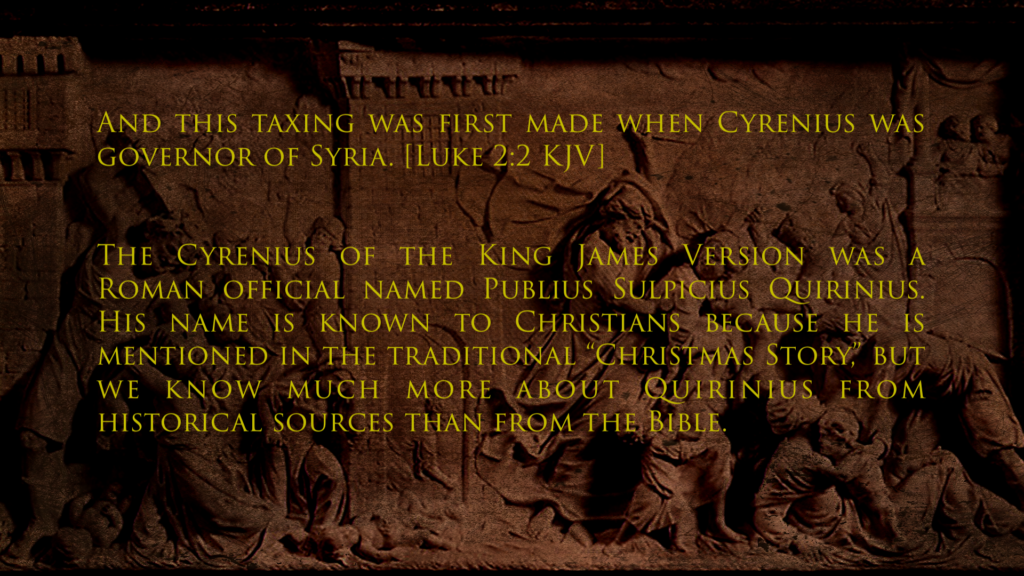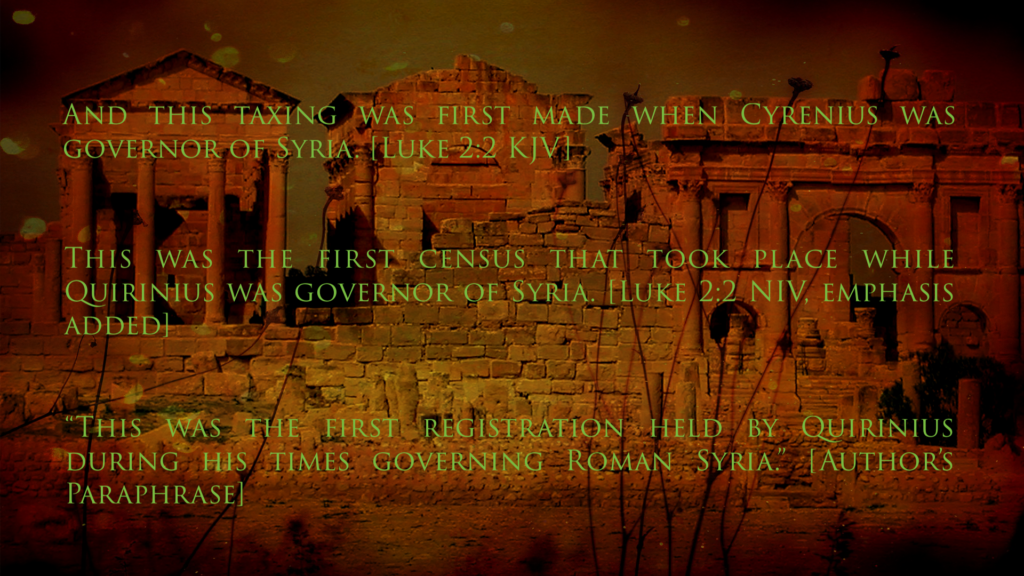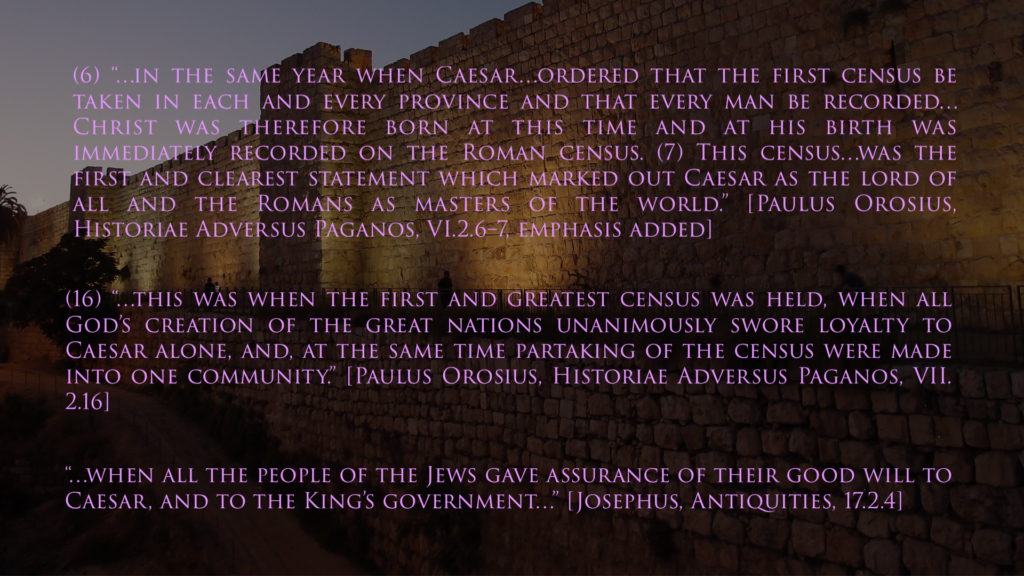
The Cyrenius of the King James Version was a Roman official named Publius Sulpicius Quirinius.[1] His name is known to Christians because he is mentioned in the traditional “Christmas Story,” but we know much more about Quirinius from historical sources than from the Bible.

The statement “While Cyrenius was governor of Syria” has been a source of significant confusion because a man named Sentius Saturnius was clearly governor of Roman Syria during this timeframe. Furthermore, the Romans carried out censuses on a regular basis as standard policy yet records of a census conducted by Quirinius at this time appear nowhere to be found. This becomes even more confusing when we recognize that historical records confirm that Quirinius became governor of Roman Syria in CE 6 and held a census and organized taxation at that time.[2] As a result, it has often been concluded that Luke either did not know what he was talking about or confused the date.
“The question of Quirinius and his census is an ‘old chestnut’.”[3]
N.T. Wright, Who Was Jesus? (Grand Rapids, MI: Eerdmans, 1992), 115.
According to the early Christian apologist Justin Martyr, Quirinius was a procurator in Judea during the administration of Sentius Saturnius—mentioned earlier, who was clearly (the) governor of Roman Syria at the time in question.[4] Procurators were appointed directly by the Emperor and had special authority distinct from the residential governors. In the regions they served, procurators were viewed by the locals as having authority at least equal to, if not greater than, the governor, and that the relationship between the two was usually quite contentious due to the procurator’s independence.

Quirinius’ first “governorship” of Syria was not “standard issue,” but was at least that of a Legatus Augusti,[5] or possibly Orienti praepostus, that is, commander-in-chief in the East. Considering that Quirinius was already held in high esteem by the Emperor, this role fits him to a “T”. This is likely the key that unlocks this mystery. In other words, Quirinius was not the actual “governor” (hegemon) but rather had special duties as procurator of Judea related to the registration ordered by Augustus, and/or was CINC in the East. He was a governor (hegemoneuo), not the governor (hegemon).[6] Additionally, although Judea was still a client kingdom at that time, geographically Rome considered Judea a part of Syria. A few years later, when Herod Archelaus was deposed by Augustus in 6 CE, Judea officially became a part of Roman Syria, and Quirinius was appointed governor (hegemon) and conducted a census.[7] This census is commonly called “the census” by Jews in general and is the one referred to by Luke in Acts 5:37.

[1] Preferred spelling. The King James spelling is most likely due to confusing his name with a successful campaign he fought against the Garamates, a tribe of Cyrenaica, an area in the Sahara Desert south of Cyrene (modern Shahhat, Libya).
[2] Acts 5:37.
[3] The definition of an “old chestnut” (also “hoary old chestnut”) is a joke, story, or subject that has become tedious or boring due to age and/or constant repetition.
[4] Justin Martyr, Apology, I.34. Cited by Martin, Astonished, 184.
[5] Legatus Augusti means the individual with this title reported directly and only to Augustus himself.
[6] Finegan, Handbook, §519–522. Mordechai, Signs in the Heavens, 102.
[7] Jewish reaction to this census gave rise to a movement known as the “Zealots,” who were willing to resist Roman occupation with force. This in turn led to the Jewish war with Rome CE 66–70, that included the destruction of the temple.